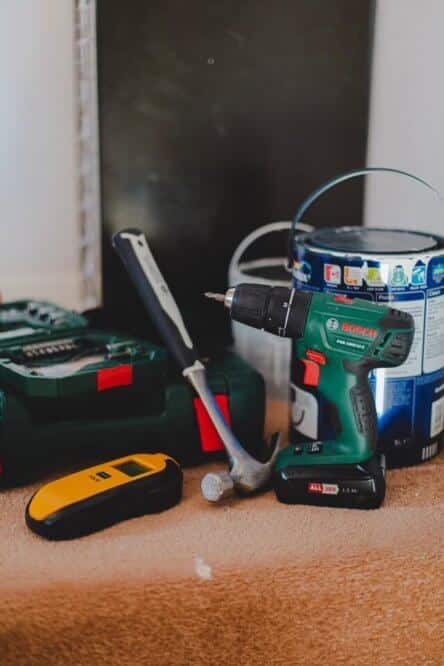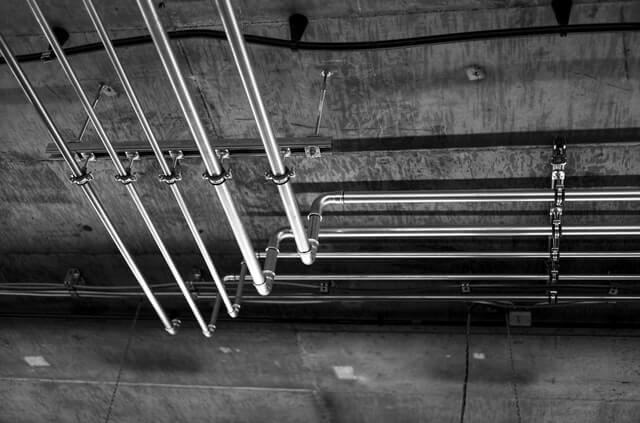Noticing air in water pipes is a very common scenario in many households. You and your family just came back from a holiday spent out of town. No one was using the water in the house for a while, so you immediately notice changes.
When you turn on the shower or a sink, a loud noise comes out along with the water.
What’s even more annoying is the banging noise one can hear even when the water is off.
Can Air in Water Pipes Cause Damage?
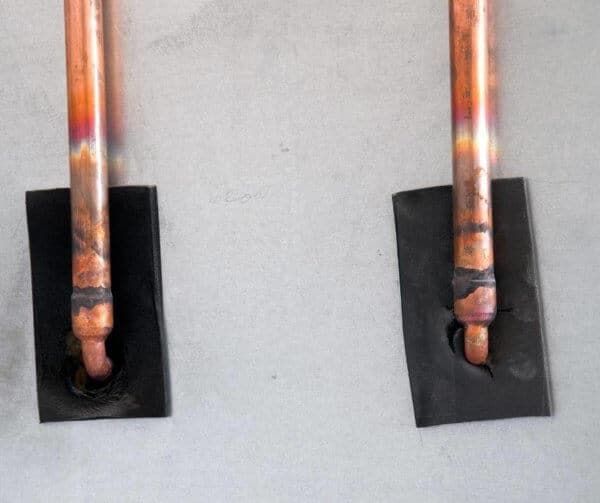
Before you start questioning if trapped air in water pipes is a big deal, let’s explain the reasons why it is.
Truth be told – most of the time, in mild cases, trapped air in pipes resolves quickly. By that logic – when there is no more air in the pipes – there is no potential damage it can cause.
However, when air stays in the water pipes long enough, it can certainly cause some damage. This is why it’s best not to wait if you notice air blocking your pipes.
First of all, what can happen when air stays too long in the pipe is something called internal oxidation.
This chemical process degrades metal over time when there are higher than usual levels of oxygen in the water. In other words, oxygen, as well as other gasses present in water, can cause corrosion of the pipes. [1]
Corroded pipes will release the water contaminated with rust, which can result in yellow water or water with a metallic taste. Not only that, but rusty water can also stain your bathroom fixtures and clothes.
Possibly the most harmful consequences of corroded pipes are the ones that have to do with health.
It can cause gastrointestinal problems, as well as high blood pressure, and cause damage to the liver and kidneys. [2]
Apart from corrosion, the air in the pipes can reduce the pumping efficiency. This is because the vacuum forms in the pipe, thus blocking the water flow.
Lastly, you probably heard of the term water hammer. It’s a hammering sound you hear due to the pressure surge in pipes.
Something similar – air hammer – can happen when air is trapped in pipes. Air can also build pressure in pipes, which can result in noise and potentially damaged fixtures.
Signs of Air in Water Pipes
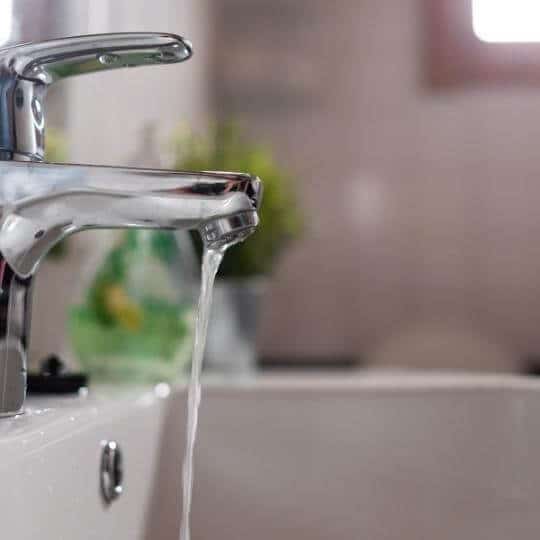
Before we discuss ways to fix air in water pipes, let’s look at some of the signs of this problem.
- Reduced Water Pressure
The vacuum forming inside the pipes due to the air present can reduce the water pressure coming from the fixtures. This is easily noticeable, as there is visibly reduced water pressure in your house (or parts of the house).
If there are air bubbles present in pipes, this will result in sputtering water, as well as reduced water pressure.
- Rust and Corrosion
As mentioned briefly in the beginning, air present in pipes can cause pipe corrosion. This is due to the process of internal oxidation, by which heightened levels of oxygen in water tend to damage metals.
This, in turn, can cause corroded pipes, and release rust-contaminated water into your household.
Some pipes are more prone to corrosion than others. [3] For example, steel and galvanized steel pipes are more prone to corrosion than stainless steel or copper pipes.
- Noise
After the water was off for a while due to the maintenance or repair, you may hear some noise. This is because the water pressure is building up along with the air bubbles.
This noise sounds like sputtering or bubbling of water, which is exactly what it is. Usually, it doesn’t last for long if the problem is only temporary.
However, if you constantly hear the noise even behind the walls, it’s time for a repair.
- Banging Pipes
Banging pipes can be a symptom of other problems, such as lack of cushioning force and excessive water pressure.
However, trapped air in pipes can also cause noise from the pipes. A simple guide to follow to discover whether banging pipes are serious or not is:
- TEMPORARY: Short and loud bang/shakes which reduce with more water flow. This usually resolves itself.
- MORE SERIOUS: Consistent banging and vibrating of the pipes, echoing into the walls and floors. This may be a more serious case requiring urgent repair, as it can lead to leaks due to constant heightened pressure.
- Blocked Pipes
What can happen if inconsistent water (due to air in pipes) is not treated, is a total pipe blockage. Air can act as a strong enough vacuum that can even entirely stop the water flow.
Make sure to not ignore this sign, even if the water is blocked only to a part of your house. Blocked pipes indicate a more serious problem has taken place – in other words – it’s a leak waiting to happen! [4]
What Causes Air in Water Pipes?
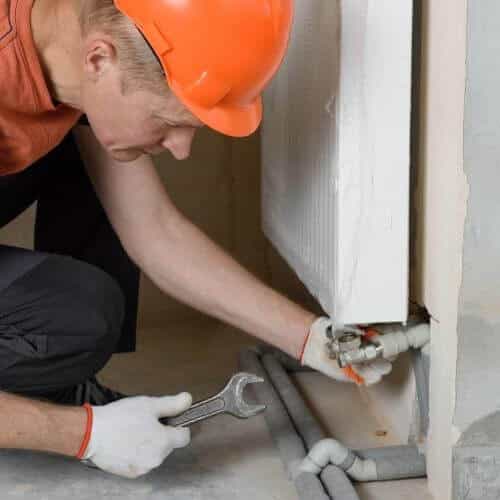
Investigating the causes can not only take the guilt off your back but also help you prevent this in the future.
Depending on the severity of your situation, different causes may have a part in introducing the air into the piping system.
- Water System Maintenance
Due to the water system maintenance, workers may cut off your water supply for a period of time. After the water is turned on again, you may notice signs of air in your plumbing fixtures.
This is very common and normal – in fact, this problem usually resolves itself. It can be quite annoying as loud noises and sputtering water can surprise you and make a mess.
That’s why it’s recommended to gently increase the water pressure after water system maintenance. Also, let the water flow until there are no air bubbles present.
- New Plumbing
Sometimes, civil plumbers may work on a water system in a way that they replace old plumbing parts with new ones.
Even if the one replacing parts of the plumbing system was you or the plumber you hired, this makes no difference. This can affect you even if there was new plumbing introduced in your neighbor’s house.
What most likely happened is that the new plumbing fixtures or parts introduced air into the whole plumbing system.
- Chemical Reactions
Air, as well as other gases, can be introduced to your piping system after a chemical reaction. [5] A reaction we’re speaking of usually occurs in your drainage system but can affect the water system as well.
After you flush certain non-flushable products, it’s quite possible for chemical reactions to occur, as the balance is disrupted. For example, antibiotics can mess with the beneficial bacteria in the system, allowing for harmful gasses to increase.
This air then separates from the water, staying trapped in your piping system and blocking the flow.
- Equipment Introducing Air
The water piping system may have pipes of different materials, such as PVC, PEX, copper, and others. Because of this, a lot of equipment exists with the purpose to attach these pipes together seamlessly.
However, certain piping equipment with this purpose can also introduce air into the system. These can be different pipe connectors, but also valves, joints, and other similar parts.
- Wells
Wells can also cause some similar problems, introducing air into the piping system in different ways.
First, it’s possible that you’re seeing air bubbles or water sputtering due to low water levels in the well. There can also be problems with a damaged well pump or valve, which can too introduce air into the system.
- Water Heaters
Water heater tanks can produce air bubbles when heating water, too. This can also happen with an entire water heating system, designed to heat the whole house.
This is typically easy to notice as the heater produces gurgling or bubbling sounds. [6] It’s easily solved by bleeding your heating system.
- Design Issues
So, you just moved into a rented apartment and all you hear is a banging noise? Then you may be facing a total design issue.
In particular, this can be the case with older apartments and houses with little or no plumbing system maintenance.
When householders decide to repipe an old house and hire a non-licensed plumber, major design issues can happen. A wrong piping material, or one not installed properly, can continuously introduce air into the piping system.
By avoiding the initial cost of plumbing, householders make this mistake and typically end up paying even more for additional repairs.
Getting Rid of Trapped Air in Water Pipes
Now you’re well aware of the signs and causes of air in water pipes. Hopefully, this helped you determine if the air in water pipes is in fact the exact problem you’re facing.
If that’s the case, then you’re ready for the next step.
It would be to get rid of the air in water pipes, and even better, prevent it in the future.
Keep in mind that removing air from water pipes is beneficial in both mild and severe cases of trapped air. This is because even mild cases can develop into more serious problems if left untreated.
A Quick Way to Get Rid Of Air in Water Pipes
Luckily, there is one quick way to get rid of air in water pipes. However, this method applies only to the mildest case scenario.
Use this method only if your situation matches these 2 cases:
- After water system maintenance
- After a vacation outside your home
What both of these cases have in common is that the water supply was shut off for a brief period of time. Air gets introduced easily in these situations, but only in small, non-harmful amounts.
What you can do: run the faucets in the house briefly – for about 2 minutes. The key is to turn all of the faucets on in the house.
Start from the lowest one and end with the highest faucet. This method allows the piping system to push the air out and through the faucets.
Sputtering water and bubbling, accompanied by short loud noises means the air is coming out.
How to Fix Air in Water Pipes: Step By Step
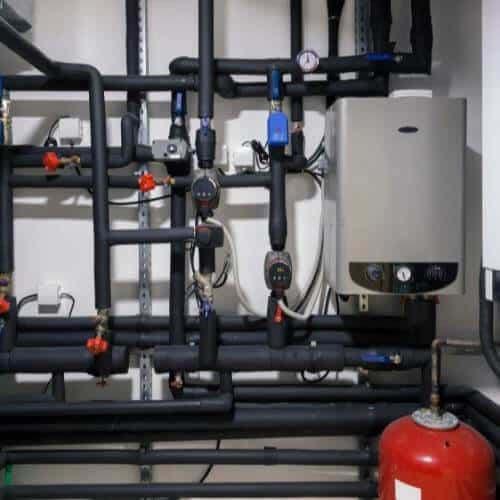
Now – if you’re facing more severe and consistent air in water pipes, then this method is the one for you.
Follow these next Step-By-Steps in the DIY plumbing method in order to push all the air out of the waterline.
- Turn Off The Main Water Valve
The first thing you need to do is to turn off the main water valve. This will shut off the water supply in your house temporarily, which is what we want.
Main water valves are usually metal and star-shaped or circular. If you can’t locate it quite yet, it may be smart to consult a professional, as this first step is quite important.
The main water valve is typically shut off by being turned clockwise (to the right).
- Turn On All Faucets
The next step will be for you to turn on all the faucets in the house. Start from the one closest to the main water valve.
Keep in mind that this does include every water connection you have in your home. This doesn’t only include a kitchen and bathroom sink, but also showers, dishwashers, washing machines, and hose bibs outside.
Also, flush all the toilets until there is no more water left in the tanks.
Then you wait until the water stops running in each of those.
- Turn On The Main Water Supply
When there is no water left, turn on the main water valve back again.
After re-supplying the water in this way, all the faucets you previously turned on should start running water. You should hear the air coming out if the trapped air was the problem.
- Run all the Faucets Again
Wait until there are no more bubbling sounds and the water is running perfectly from each faucet. Then turn each faucet off, starting from the one furthest from the main water valve.
And that’s it – you just removed air pockets from your water pipe system!
Valve to Remove Air From Water Line
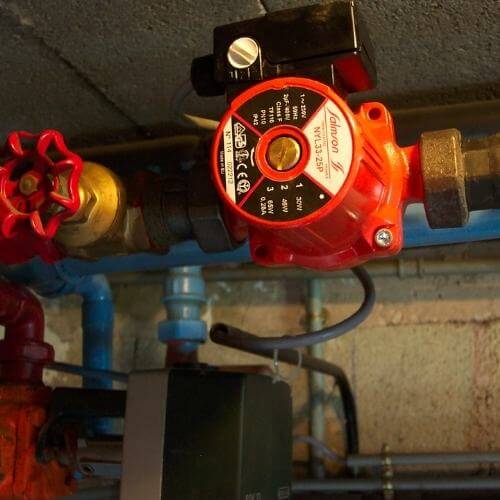
Air valves are hydromechanical devices that are designed to release excess air from the water piping system. [7]
When air enters the piping system, it naturally collects in the highest points of the system. This is simply because of how air and water act in condensed areas, especially when a vacuum is created.
Air trapped this way in pipes can lead to pipe corrosion, pipe failure, noises, and other damages mentioned previously.
This is why air release valves are installed to the highest points of the pipeline, where air usually sits. The valve is designed in a way that it constantly balances the liquid while keeping the air out of pipes.
The air release valves maintain the pipeline efficiency, by allowing proper water flow in the waterlines. They can be spotted on the highest points of the system, both on the waterlines and sewer lines.
They also operate automatically after being installed, so it’s of utmost importance to install them properly to ensure proper water flow.
The main disadvantage of air release valves is that they can’t always keep up with the upcoming airflow. This is especially true if the pipeline is filled or emptied too quickly.
One way to solve this is to choose the proper sized valve for your situation.
Conclusion
Trapped air in water pipes is a common problem many households are facing. It may result in constant bubbling noises, inconsistent water flow, or even corroded pipes.
If not resolved by itself and consistent, trapped air may cause serious damage to your piping system. Also, it may even damage the health of the householders, if left untreated for a long time.
Luckily, this guide showed you both simple and more advanced ways of getting rid of air in water pipes.
When resolved, there is no more potential damage it can cause. However, consider installing an air release valve if this is a constant problem in your house.

Michael Davis is a heating & plumbing expert who currently works as independent contractor in SC. He also writes for Plumbertip.
For almost 10 years he worked on various plumbing tasks across South Carolina.
